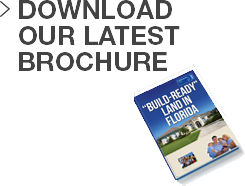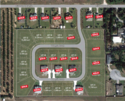People moving to the Interstate 4 corridor and South Florida propelled the state’s population to almost 20 million residents last year, allowing it to surpass New York as the nation’s third-largest state, according to U.S. Census Bureau figures released Thursday.
More than half of Florida’s growth last year came from three metropolitan areas: South Florida, Orlando and Tampa. With Florida adding another 292,000 residents last year, the state now has 19.9 million residents, trailing only California and Texas. The new figures show that growth in Florida’s largest cities has returned to, and in some cases surpassed, pure numbers harkening back to the boom years of last decade.
“Part of the population growth is everybody is coming back since there are jobs aplenty and construction is on fire,” said Jeff Briggs, planning manager for the City of Winter Park, one of the most affluent communities in metro Orlando.
There currently are 110 new homes under construction in Winter Park, where the average new home costs $600,000. During the pre-recession boom years last decade, 70 to 80 homes were considered normal, he said. The construction boom fueled by fatter stock market portfolios among Winter Park’s well-heeled residents has attracted many of the new residents.
“You drive around and you see apartments going up everywhere,” Briggs said. “It makes no difference if people are going to live there. It only matters if there is financing.”
South Florida, an area stretching from Palm Beach County to Miami-Dade County with 5.9 million residents, had the eighth-highest population increase in the nation with a jump of 66,000 new residents from July 2013 to July 2014. International migration accounted for three-quarters of the growth, while natural population growth made up the rest. The area actually lost domestic residents.
Lumped together as the heart of the I-4 corridor, Orlando and Tampa’s growth in pure numbers last year surpassed that of South Florida by more than 1.3 times.
Metro Orlando, with a population last year of 2.3 million people, increased by about 50,000 new residents. Domestic migration accounted for under half of the growth, international migration represented less than a third of the growth and natural increase made up less than a quarter of the growth. Natural growth compares the number of babies born to the number of deaths.
The Tampa-St. Petersburg-Clearwater region increased by 41,000 people and now stands at 2.9 million residents. Domestic migration made up more than two-thirds of the growth and international migration accounted for more than a quarter of the increase. Natural growth barely registered.
The latest numbers shows that Florida’s population growth has returned to normal parameters after screeching to a halt in the wake of the housing downtown and the economic recession seven years ago.
“When you look at population growth in the past two or three decades, Florida grows about 300,000 people a year,” said Stefan Rayer, population program director Bureau of Economic and Business Research at the University of Florida. “So this is pretty close to what has happened in the past.”
Even Florida’s smaller metro areas punched above their weight:
- The Villages retirement community northwest of Orlando, with only a population of 114,000 residents, was the nation’s fastest growing city, increasing by 5.4 percent. Domestic migration made up most of the growth. Without new retirees moving in, The Villages would have lost population.
- The Fort Myers area was the nation’s sixth fastest-growing metro area with a growth rate of 2.7 percent that brings the population to nearly 680,000 residents. Domestic migration made up three-quarters of the growth.
- The Naples area was the 10th fastest-growing city in the United States, growing at a 2.5 percent rate to have a population of just under 350,000 residents last year. Domestic migration made up less than two-thirds of the growth, and international migration accounted for most of the rest.
Some of the smaller communities are now dealing with growth headaches found in the bigger cities.
“It’s always hectic in The Villages,” said Paula Roberts, an office manager for Ronnie’s Plumbing, which services The Villages. “The traffic can be bad, bumper to bumper, especially when the snowbirds are down here.”
source:http://www.washingtontimes.com/news/2015/mar/26/growth-in-south-florida-i-4-corridor-propelled-pop/?page=all













